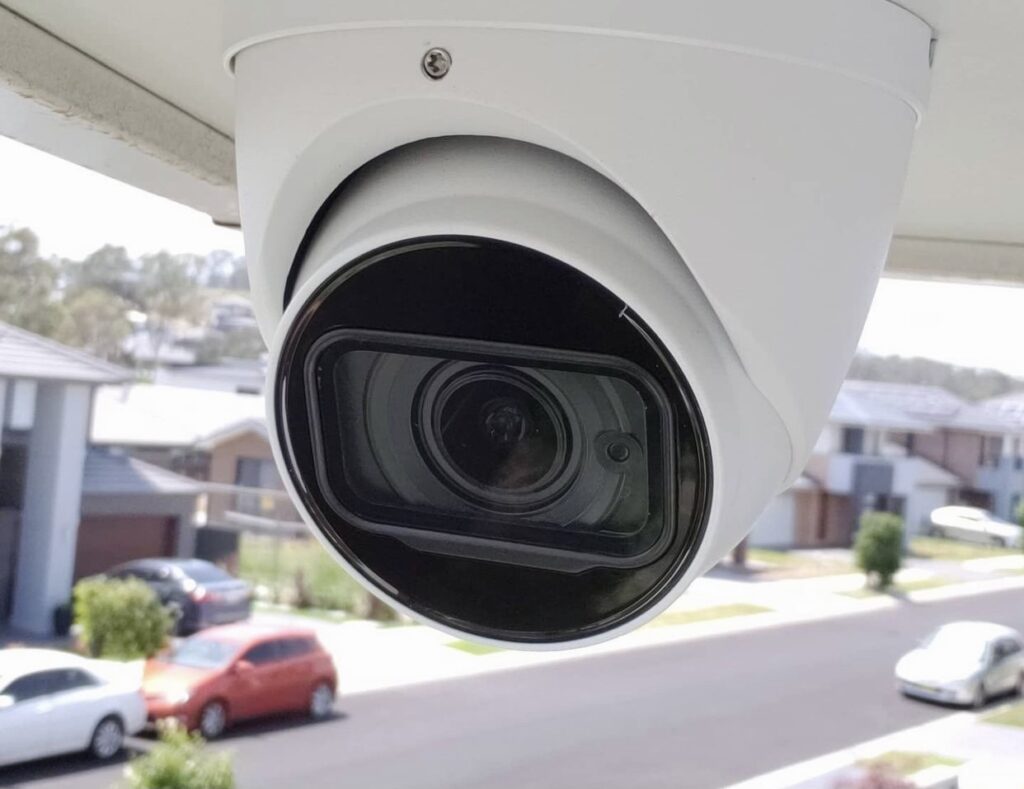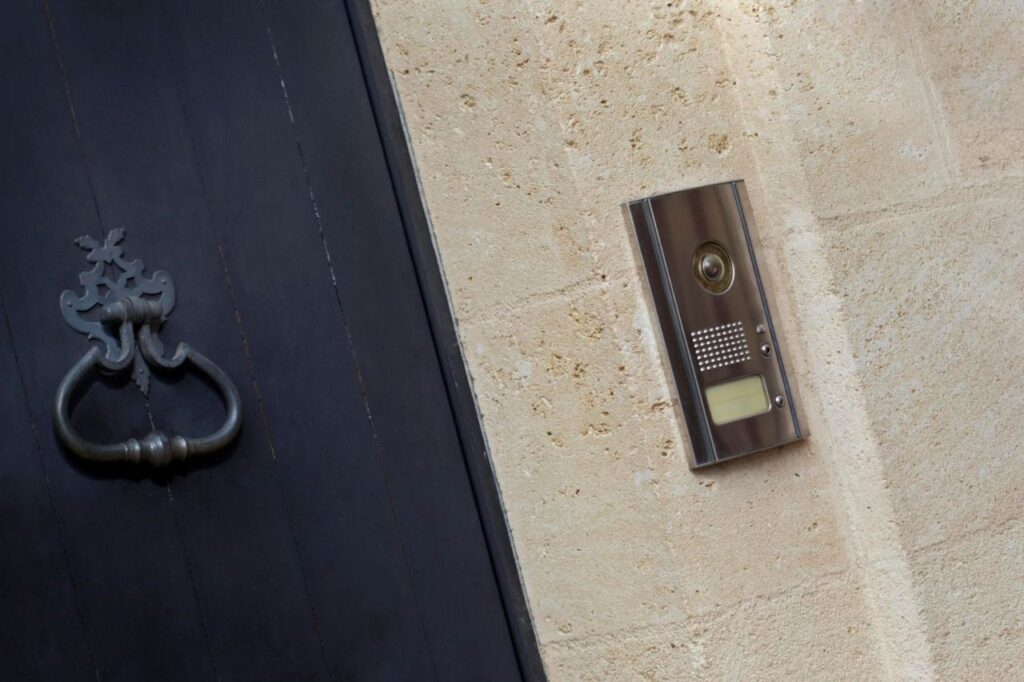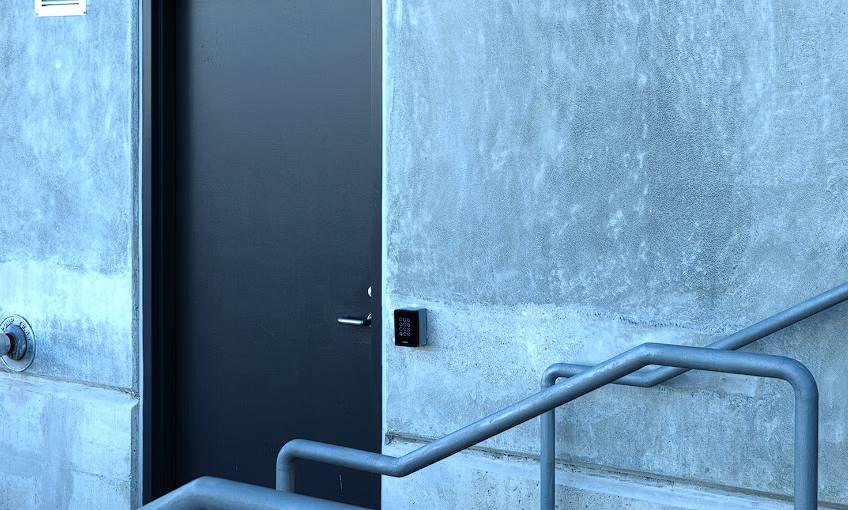You need a reliable access control system if you own or manage a building of any kind. One that does its job of protecting the building's employees and tenants while also being easy to use. Fortunately, today's society places a premium on mobility. Smartphones have simplified many aspects of our daily lives, from setting an alarm to paying for groceries. Why not use them to control who enters and leaves buildings?
One of the most cutting-edge developments in security systems for buildings is mobile access control (proptech). Better, more convenient, and safer structures can be made when smartphones are used to unlock doors, control access rights, and monitor entry and exit events.
Find out what mobile access technology is, how it functions, what it can do for you, how to pick the right system, and how to give your visitors the full mobile access experience by reading on.
What Exactly Is Mobile Access Control?
With mobile access control, tenants' smartphones, tablets, and even smartwatches serve as their credentials to enter the building and any individual rooms within. Increased smartphone availability makes mobile access control a practical and safe method for controlling entry and exit points. Tenants can usually control entry with their phones by downloading an app.
Three methods of identity verification using a mobile device are outlined below:
- Fingerprint and facial recognition systems are examples of biometrics.
- Utilise a mobile app's interaction methods, such as swiping or tapping.
- Passcode.
The need to distribute keys, fobs, or cards is eliminated when smartphone access control is implemented at a rental property. Both tenants and property managers lose or damage these items frequently, making replacement a necessity.
Most tenants already have smartphones, so there's less of a chance of them going missing.
The use of a mobile app for keyless entry into a building benefits both tenants and management by streamlining the process of controlling access. Since mobile access control allows users to unlock doors without having to touch any other surfaces, it can also be considered touchless.
When It Comes to Mobile Access, What Exactly Is “Credentialing”?
To better monitor who comes and goes from the building and when property management can use mobile access credentials. In addition, authorised personnel can use mobile access credentials as a safe method of entering restricted areas of such a building.
In addition, residential properties can control access to amenity areas by charging a fee for use and then issuing mobile access credentials to only those who have paid the fee. Administrations can issue or revoke mobile credentials at any time and from any location thanks to cloud-based mobile access control systems.

The Inner Workings of a Mobile System for Access Control
To gain entry, users of a mobile system for access control simply present their mobile device. These setups permit the door's access reader to talk to tenants' mobile devices, making it easier to verify IDs.
The door or gate can be unlocked with the tap of a button in an app or by simply holding your phone near a mobile access control reader. This method of access control provides not only the highest level of safety but also the greatest level of convenience.
Mobile access can be enabled in three primary ways: Technologies like wireless local area networks, Bluetooth, and NFC (Near field communication).
WiFi
The most common wireless technology today, WiFi, is likely already in use by dozens of devices on your property. The same is true of phone access control systems, many of which rely on a WiFi connection to function.
When it comes to access control, WiFi-based systems are the most convenient because the reader and tenants' phones can use the same wireless network. The lock is unlocked after the reader confirms the tenant's identity.
Bluetooth
Bluetooth is another popular method used in smartphone-based door access control systems.
With Bluetooth Low Energy (BLE), a connection can be made instantly from a distance of a few feet, usually within 2 or 3 feet, eliminating the need to manually process pair devices. With an access control reader installed, the door will open when a nearby mobile device transmits a signal proving its ownership of valid credentials.
NFC
In the same way that Bluetooth Low Energy (BLE) links a phone to the reader, near-field communication (NFC) does the same thing. The Near Field Communication (NFC) technology may not be as well-known as WiFi and perhaps Bluetooth, but you've probably used it before in a tap-to-pay payment application.
In contrast to BLE technology, however, NFC can only function when the user is within a few inches of the access control reader.
Benefits of Using a Mobile Access System
Mobile access control has a number of advantages. In addition to providing a practical means of entry, this system also equips building managers with an easy-to-use tool for controlling who has access to which areas.
Buildings of these types can benefit from mobile access control solutions:
- High-rise apartment complexes
- Buildings with business and residential use
- Communities protected by walls or gates
Apartment Complexes
Tenants in apartment complexes value safety above all else when choosing a place to live. Fifty-five per cent of tenants say they would choose an apartment in part because of its high-tech safety features, such as a smartphone-based access control system. Most renters today are millennials, a tech-savvy generation that has grown up with increasingly sophisticated devices.
There are three advantages to using mobile access-control in apartment complexes:
- Getting rid of physical keys is a good idea because they are the number one lost item in the United States; citizens typically spend 2.5 days scouring their neighbourhoods for misplaced keys and wallets. On the other hand, people living in your community are significantly less likely to leave their phones at the office. By allowing tenants to enter their units using a code sent to their phones, the risk of residents being locked out due to misplaced keys is eliminated.
- Neither doormen nor overnight workers are required: Having a doorman on call all the time comes at a price. The convenience of smartphone-based entry control means that tenants can unlock their doors whenever they like, day or night. Staff at the property are then able to devote their attention to things like responding to maintenance requests and planning social gatherings for the neighbourhood.
- Mobile access control systems with a video intercom can let visitors, service providers, as well as delivery people into a building with the use of virtual keys and a delivery pass. In order to ensure that residents never miss a delivery, they can issue a temporary pass to delivery personnel. Virtual keys allow authorised visitors to enter the home even when the owner isn't there.
Buildings With Business and Residential Use
Access management is one of the trickiest aspects of running a commercial building. Even more complicated are the access management requirements of multi-tenant commercial buildings, where different types of businesses often coexist under the same roof. In this context, mobile access control is a helpful tool for controlling entry to a building or other facility.
Here are three reasons why mobile access control is ideal for workplaces:
- Tenants are interested in increased safety because they need to feel safe while they are at work. That's why it's crucial for business properties to have mobile access. It's much less likely that an employee's cell phone will get lost or stolen than a key card or key fob. To make sure that only approved tenants are able to reach specific floors, a mobile system can be used to regulate elevator access.
- Whether they are clients, associates, business partners, friends, or family, tenants regularly host guests in their office spaces. Tenants can control who has access to their property and when via a mobile phone-based access control system.
- Strong yet easy-to-use security for the property's interior: Managing who has access to which parts of a mixed-use commercial property is a crucial task. Instead of manually programming individual access cards for each employee and crossing your fingers that they don't get lost, switch to a mobile access-control system hosted in the cloud. You won't need to hand out physical keys or access cards because you'll be able to control these systems from afar. When an access control system is linked to an enterprise resource planning (ERP) database, it is automatically updated whenever an employee is added to or removed from the company's payroll.
Communities Protected by Walls or Gates
Property in gated communities is in high demand. There is a high demand for gated communities from both the commercial and residential sectors because of the superior safety and convenience they provide.
In gated communities, mobile access control has three advantages:
- An electronic gate access system that can be operated by a tenant's cell phone eliminates the need for tenants but also visitors to leave their vehicles in order to gain entry.
- Eliminates the potential for traffic backups caused by the five minutes it could take to verify each car or visitor in a gated neighbourhood without an effective access control system. Tenants and approved visitors, however, can gain access in a matter of seconds with mobile access control.
- Eliminates or drastically reduces tailgating, a major problem in enclosed areas such as gated communities. By setting up a camera as part of a phone access control solution, you can record any vehicles or visitors who aren't supposed to be there.
Selecting the Appropriate Portable Access Control System
You may feel overwhelmed by all the available options for mobile access control. For this reason, we have listed the three most important features to look for in a portable security system.
Three characteristics to look for are:
Camera-Equipped
Use a camera-equipped mobile access control device to provide yourself peace of mind. Cameras integrated into access control systems allow building management and tenants to check visitors in real-time. By installing this safety measure, you can rest assured that only approved visitors will be able to enter your home.
Use a camera in conjunction with one of these two smartphone-based access control systems for optimal performance:
- Installing a video intercom at the building's entrance can help with access control. Guests use the intercom to gain entry. Guests can then see and speak with residents via their smartphones before access is granted.
- Access control keypad with built-in video surveillance helps keep your building secure. A variety of amenities and workplaces can have their access privileges managed. Every time someone uses the keypad to enter the room, a picture is taken by the embedded camera. This means that you can check your mobile device at any time to see a complete log of all entry events.
Cloud-Based
Cloud-based mobile access control systems are simple to administer from afar. Tenant access credentials are more securely stored in the cloud rather than on a local server, allowing for remote system updates.
Tenants' mobile devices will also receive automatic updates to their access credentials. This eliminates the need to distribute fresh key cards or even other forms of physical identification.

As the cloud is integrated into the IoT ecosystem, the system for access control can be linked to any internet-enabled gadget.
Connect your online access control platform with the following:
- A video intercom.
- An organisation's customer relationship management system or Google Apps directory.
- Slack, so that you can get alerted without lifting a finger whenever certain security-related events occur.
A Top-Rated Mobile Application
The mobile app is a crucial part of any mobile access control system. Pick a programme with a well-received mobile app. The app's interface and notification controls should be straightforward enough that residents can use them with confidence. Looking at reviews left by actual users is a brilliant way to figure out how popular an app is.
Advantages of a top-tier mobile app for controlling access:
- The more methods there are to enter and exit a building, the better. Swiping or tapping on a button, speaking commands, and 3D or haptic touch are all examples of methods of interaction with an app.
- Choose an app that keeps a record of when doors are opened or closed for added peace of mind. All door releases will have photos taken at the appropriate time and date, which can be viewed in the app for review.
- In the age of the Internet, it is important that homeowners have a simple way to grant access to their homes to trusted guests, such as delivery personnel, even when they are not there physically. Virtual keys are a feature of a mobile app that allows residents to pre-share access information with visitors. Also, so that no packages are ever lost in transit, residents should be able to provide couriers with temporary access codes.
FAQs About Mobile Access Control
How Much Will a Mobile Access Control Installation Be?
The cost of a mobile access control installation can vary greatly depending on a number of factors such as the size of the building, the number of doors or areas that need to be controlled, the type of access control technology used and the level of integration with other security systems.
On average, a basic mobile access control system for a small apartment building in Australia can range from $1000 to $15000 AUD, however, it can go higher for larger buildings or more advanced systems.
It's important to note that this cost may also include additional expenses such as equipment, installation, and maintenance. Additionally, depending on the complexity of the setup and the type of technology used, the cost of labour may vary.
It's best to get a detailed estimate from a reputable security company that can evaluate the specific needs and budget of your building.
Will a Mobile Access Control Make a Residential Property More Secure?
A mobile access control system can make a residential property more secure by restricting access to certain areas of the building, and allowing only authorized individuals to enter. This can be done by using various technologies such as keycards, fobs, biometrics, or smartphone-based access.
This can help to prevent unauthorized access and improve security by ensuring that only residents and authorized visitors are able to enter the building.
Additionally, mobile access control system can be integrated with other security systems such as surveillance cameras, alarm systems, and intercoms to provide an even more comprehensive security solution.
However, it's important to note that a mobile access control system is just one aspect of overall security and it should be used in conjunction with other security measures for maximum protection.
Is Mobile Access Control for Residential Mandatory?
A mobile access control system is not mandatory for residential properties, it is an optional security measure that can be added to a property. Whether or not to install a mobile access control system depends on the specific needs and budget of the property owner.
It may be more beneficial for properties with a high volume of foot traffic, or where security is a major concern, such as gated communities or luxury apartment buildings. However, for other residential properties, traditional locks and security cameras may be sufficient.
It is up to the property owner or landlord to determine the best security measures for their property and budget.
Does Having a Mobile Access Control Increase Rent?
Having a mobile access control system in a residential property may increase the rent, as it can be perceived as a valuable and desirable feature for tenants. Properties with mobile access control systems may be able to charge higher rents as they can offer an additional level of security and convenience.
Additionally, some tenants may be willing to pay more for the added security and peace of mind that a mobile access control system provides.
However, it is important to note that the cost of installing and maintaining a mobile access control system may also be passed on to the tenants through higher rent prices, so it's best to weigh the costs and benefits before making a decision.
How Common Are Mobile Access Control in Residential Buildings?
The use of mobile access control systems in residential buildings is becoming increasingly common. It is becoming a popular security measure for multi-unit residential buildings, such as apartments, condominiums and gated communities.
Mobile access control systems are considered to be a convenient and secure way of controlling access to a building and it can also be integrated with other security systems. However, the adoption of mobile access control systems in residential buildings varies depending on the location and type of property.
More luxurious and high-end residential buildings are more likely to have mobile access control systems installed, while smaller and more basic properties may not have them.
Conclusion
A smartphone's proximity sensor can be used to unlock a door, manage who has access, and keep tabs on who comes and goes. The tenants' mobile devices, such as smartphones, tablets, and smartwatches, act as their credentials.
With the proliferation of smartphones, mobile access control has emerged as a convenient and secure option. The door's access reader can communicate with tenants' mobile devices in three main ways: through Wi-Fi, Bluetooth, or NFC (Near field communication) technologies.
Because cloud-based mobile access control systems are hosted remotely, administrators can issue and revoke mobile credentials from anywhere.
Whether it's a high-rise apartment complex or a gated community, mobile access control can be put to use in a wide variety of structures. This system not only provides a convenient method of entry, but also provides building managers with a straightforward method of regulating who has access to which parts of the building.
A mobile access control system with a video intercom can be used to grant visitors, service providers, and delivery people access to a building with the help of virtual keys and a delivery pass. When tenants have access to their buildings via their smartphones, they can unlock their doors whenever they like, day or night.
Tenants care about improved security because they need to feel safe in their living and working environments.
A key card or fob is more likely to be misplaced than an employee's cell phone. The ERP database is integrated with the access control system. Tenant-controlled electronic gate access via smartphone app.
The management and tenants of a building can do a real-time visitor check with the help of cameras that are part of the access control system. It is safer to store tenants' login information in the cloud than on a local server.
Any mobile access control system is only as good as its mobile app.
Select an offering with a popular mobile app. To feel more secure, download an app that tracks the times doors are opened and closed. It will be possible to review photos of all opened doors right in the app.
Content Summary
- You need a reliable access control system if you own or manage a building of any kind.
- Find out what mobile access technology is, how it functions, what it can do for you, how to pick the right system, and how to give your visitors the full mobile access experience by reading on.
- With mobile access control, tenants' smartphones, tablets, and even smartwatches serve as their credentials to enter the building and any individual rooms within.
- Increased smartphone availability makes mobile access control a practical and safe method for controlling entry and exit points.
- Tenants can usually control entry with their phones by downloading an app.
- Utilise a mobile app's interaction methods, such as swiping or tapping.
- The need to distribute keys, fobs, or cards is eliminated when smartphone access control is implemented at a rental property.
- The use of a mobile app for keyless entry into a building benefits both tenants and management by streamlining the process of controlling access.
- To better monitor who comes and goes from the building and when property management can use mobile access credentials.
- In addition, residential properties can control access to amenity areas by charging a fee for use and then issuing mobile access credentials to only those who have paid the fee.
- Administrations can issue or revoke mobile credentials at any time and from any location thanks to cloud-based mobile access control systems.
- To gain entry, users of a mobile system for access control simply present their mobile device.
- These setups permit the door's access reader to talk to tenants' mobile devices, making it easier to verify IDs.
- To counter this, mobile access control systems use mobile devices such as tablets, smart phones, and smartwatches instead of traditional fobs and cards.
- The door or gate can be unlocked with the tap of a button in an app or by simply holding your phone near a mobile access control reader.
- This method of access control provides not only the highest level of safety but also the greatest level of convenience.
- The same is true of phone access control systems, many of which rely on a WiFi connection to function.
- When it comes to access control, WiFi-based systems are the most convenient because the reader and tenants' phones can use the same wireless network.
- Bluetooth Bluetooth is another popular method used in smartphone-based door access control systems.
- In addition to providing a practical means of entry, this system also equips building managers with an easy-to-use tool for controlling who has access to which areas.
- People living in your community are significantly less likely to leave their phones at the office.
- By allowing tenants to enter their units using a code sent to their phones, the risk of residents being locked out due to misplaced keys is eliminated.
- The convenience of smartphone-based entry control means that tenants can unlock their doors whenever they like, day or night.
- Mobile access control systems with a video intercom can let visitors, service providers, as well as delivery people into a building with the use of virtual keys and a delivery pass.
- In order to ensure that residents never miss a delivery, they can issue a temporary pass to delivery personnel.
- Virtual keys allow authorised visitors to enter the home even when the owner isn't there.
- Buildings With Business and Residential Use Access management is one of the trickiest aspects of running a commercial building.
- Even more complicated are the access management requirements of multi-tenant commercial buildings, where different types of businesses often coexist under the same roof.
- Tenants can control who has access to their property and when via a mobile phone-based access control system.
- Strong yet easy-to-use security for the property's interior: Managing who has access to which parts of a mixed-use commercial property is a crucial task.
- Instead of manually programming individual access cards for each employee and crossing your fingers that they don't get lost, switch to a mobile access-control system hosted in the cloud.
- When an access control system is linked to an enterprise resource planning (ERP) database, it is automatically updated whenever an employee is added to or removed from the company's payroll.
- In gated communities, mobile access control has three advantages:
- An electronic gate access system that can be operated by a tenant's cell phone eliminates the need for tenants but also visitors to leave their vehicles in order to gain entry.
- Eliminates the potential for traffic backups caused by the five minutes it could take to verify each car or visitor in a gated neighbourhood without an effective access control system.
- Tenants and approved visitors, however, can gain access in a matter of seconds with mobile access control.
- Eliminates or drastically reduces tailgating, a major problem in enclosed areas such as gated communities.
- By setting up a camera as part of a phone access control solution, you can record any vehicles or visitors who aren't supposed to be there.
- Use a camera-equipped mobile access control device to provide yourself peace of mind.
- Cameras integrated into access control systems allow building management and tenants to check visitors in real-time.
- Use a camera in conjunction with one of these two smartphone-based access control systems for optimal performance:Installing a video intercom at the building's entrance can help with access control.
- Guests use the intercom to gain entry.
- Access control keypad with built-in video surveillance helps keep your building secure.
- Cloud-based mobile access control systems are simple to administer from afar.
- Tenants' mobile devices will also receive automatic updates to their access credentials.
- Connect your online access control platform with the following:A video intercom.
- The mobile app is a crucial part of any mobile access control system.
- Pick a programme with a well-received mobile app.
- Choose an app that keeps a record of when doors are opened or closed for added peace of mind.
- All door releases will have photos taken at the appropriate time and date, which can be viewed in the app for review.
- Virtual keys are a feature of a mobile app that allows residents to pre-share access information with visitors.
Access control is an essential element of security that determines who is allowed to access certain data, apps, and resources—and in what circumstances. In the same way that keys and pre-approved guest lists protect physical spaces, access control policies protect digital spaces.
Three main types of access control systems are: Discretionary Access Control (DAC), Role Based Access Control (RBAC), and Mandatory Access Control (MAC). DAC is a type of access control system that assigns access rights based on rules specified by users.







